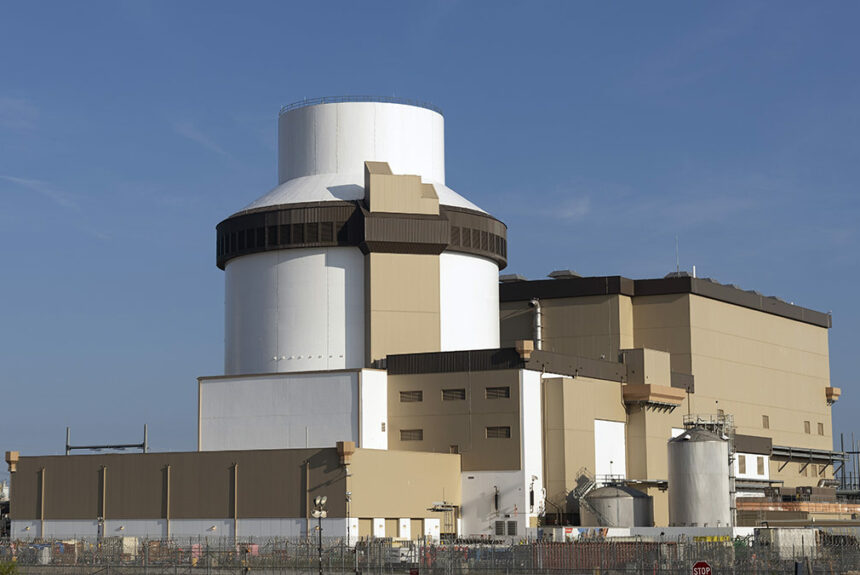From household groceries to gas prices, families have incurred steep cost increases over the past three years. While inflation impacts the price of everyday items, it also increases the cost of clean energy deployment. The recent shuttering of offshore wind and nuclear energy projects because of ballooning costs demonstrates that cost-competitiveness is a critical component for wide-scale clean energy deployment. Increasing the share of low-carbon and carbon-free energy for the benefit of consumers will require policies that reduce wasteful spending, streamline regulations, and lower barriers for entrepreneurs.
>>>READ: Want to Cut Inflation and Emissions? Cut Tariffs
Inflation has negatively impacted nearly every source of clean energy, most recently advanced nuclear power. Last week, NuScale canceled the first-of-its-kind advanced nuclear energy power plant project with Utah Associated Municipal Power Systems after costs increased by 56%. The termination of the contract resulted in NuScale paying nearly $50 million in fees.
The cancellation of the NuScale project comes on the heels of steep losses for green energy investment funds. From August through October, the S&P’s Global Clean Energy Index, which is made of the largest 100 solar and wind companies, dropped 20.2 percent. In contrast, the S&P 500’s Energy Index, which includes several oil and gas giants, jumped by 6 percent in that time.
Meanwhile, several offshore wind projects have faced uncertainty or are now defunct. Ørsted, the nation’s largest offshore wind developer, recently canceled two projects in New Jersey citing supply chain constraints and high interest rates. Projects in Massachusetts are behind schedule and developers are paying millions of dollars in penalties to break contracts with utilities, while Siemens Energy has announced that it will not build a wind turbine facility in Portsmouth, Virginia.
The energy industry has been especially impacted by higher interest rates and borrowing costs because the industry’s projects are agreed to through long-term contracts that set the rate of electricity before a project undergoes construction. Renewables in particular have seen a surge in demand that has often outpaced supply, driving costs up further. If the cost of building and borrowing money goes up significantly after this rate is agreed to, developers will either see less of a profit or be forced to delay or cancel a project altogether. While it may be right to halt a project rather than pass steep costs on to consumers, these cancellations can lead to less investor confidence and less funding for projects in the space.
Higher interest rates not only hamper the private sector’s ability to advance clean energy but the public sector’s ability, too. In fiscal year 2023, the U.S. Treasury paid $873.9 billion in interest costs and is expected to pay over $1 trillion in the upcoming fiscal year–costs that will be borne by taxpayers and future generations. Being forced to pay such steep rates on interest payments alone hinders America’s ability to invest in lower priority—albeit critically important—projects like research and development which reduce the green premium of emerging technologies.
This problem is seen at the global level as well. In its 2023 Global Innovation Index, which calculates a country’s ability to innovate and export its innovations, the World Intellectual Property Organization states, “Global government R&D budgets are expected to grow in real terms in 2022, while R&D expenditure by top corporate spenders rose substantially. But it is unclear whether this can compensate for surging inflation.”
>>>READ: The Hidden Costs of Green Protectionism
One obvious solution to tame inflation and higher interest rates in the U.S. is to narrow the size and scope of government by cutting wasteful spending. Generous subsidies for mature technologies and protectionist policies to support specific industrial activities in the U.S. are expected to cost somewhere between $515 billion and $1.2 trillion over the next 10 years, up from an initial estimation of $369 billion. While these policies have the praiseworthy goal of bolstering clean energy production, they will have the unintended consequence of slowing down the global deployment of carbon-free power production by depleting the customer base and halting economic development in emerging economies. Redirecting or rescinding wasteful spending portions of these bills will be impactful in reducing the bloat of the federal budget, which will in turn help consumers and businesses.
At the same time, policymakers should look to modernize regulations to bring more energy projects online. While the private sector is willingly financing these projects, maintaining the status quo, which delays clean energy projects by an average of 4.7 years, will create bottlenecks among various energy projects. Onerous regulations and litigious activists have already stunted investment and innovation.
Inflation has hit clean energy projects particularly hard. Reducing wasteful and redundant government spending and modernizing regulations will lower borrowing costs for companies and make clean energy more competitive. Smart fiscal policy can help unleash a clean energy renaissance.
The views and opinions expressed are those of the author’s and do not necessarily reflect the official policy or position of C3.
